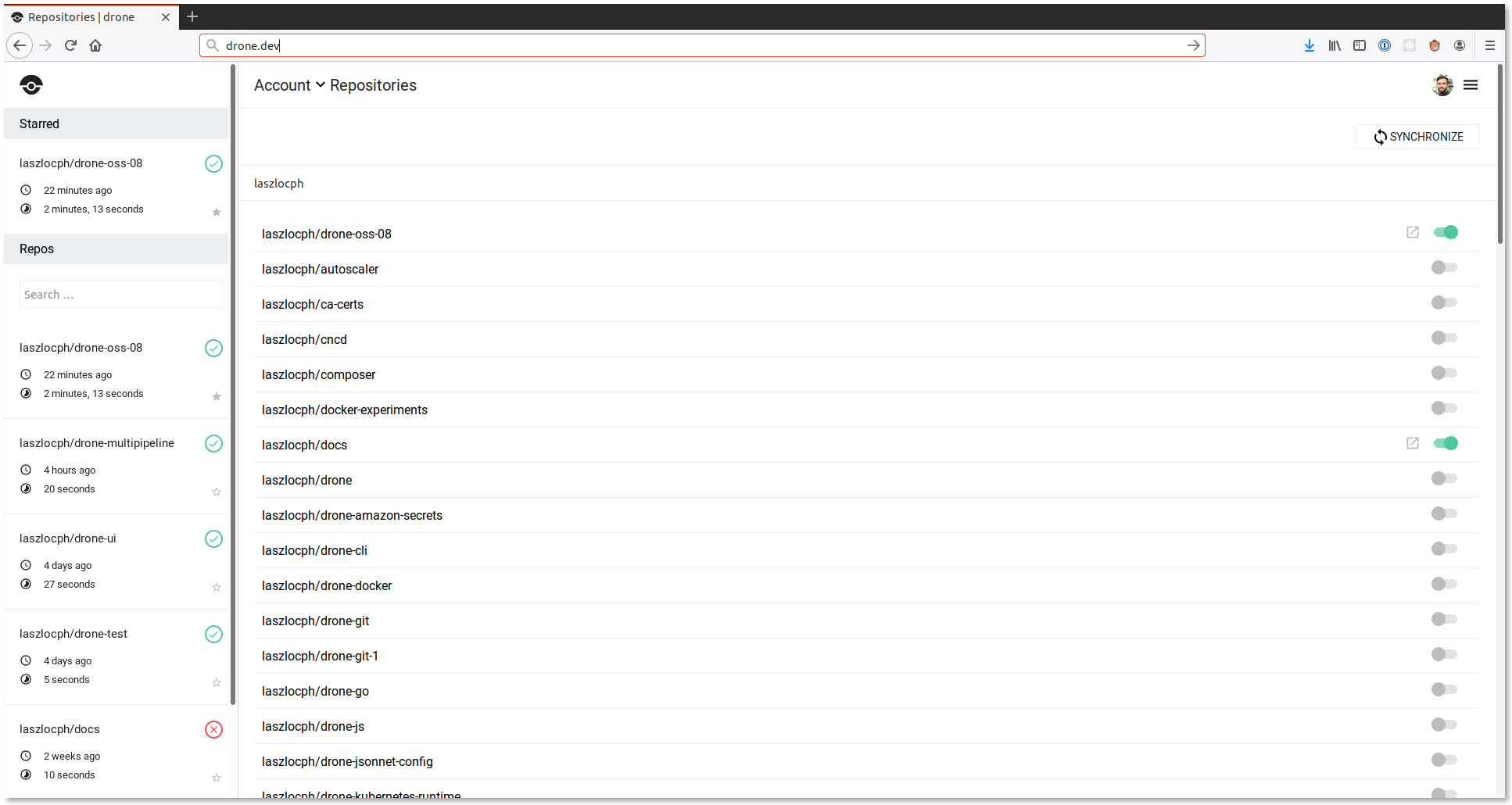- Replace mkdocs with docosaurus (improved menu structure, ...) - Structure docs into `Usage` and `Server Setup / Administration` - Update favicon - Create new pipeline-syntax page with all options and links to more detailed docs if available - Add ci to publish to `woodpecker-ci.github.io` - Deploy docs preview to surge for review - Update start-page Co-authored-by: 6543 <6543@obermui.de>
2.3 KiB
Getting started
Repository Activation
To activate your project navigate to your account settings. You will see a list of repositories which can be activated with a simple toggle. When you activate your repository, Woodpecker automatically adds webhooks to your version control system (e.g. GitHub).
Webhooks are used to trigger pipeline executions. When you push code to your repository, open a pull request, or create a tag, your version control system will automatically send a webhook to Woodpecker which will in turn trigger pipeline execution.
Required Permissions
The user who enables a repo in Woodpecker must have
Adminrights on that repo, so that Woodpecker can add the webhook.Note that manually creating webhooks yourself is not possible. This is because webhooks are signed using a per-repository secret key which is not exposed to end users.
Webhooks
When you activate your repository Woodpecker automatically add webhooks to your version control system (e.g. GitHub). There is no manual configuration required.
Webhooks are used to trigger pipeline executions. When you push code to your repository, open a pull request, or create a tag, your version control system will automatically send a webhook to Woodpecker which will in turn trigger pipeline execution.
Configuration
To configure you pipeline you should place a .woodpecker.yml file in the root of your repository. The .woodpecker.yml file is used to define your pipeline steps. It is a superset of the widely used docker-compose file format.
Example pipeline configuration:
pipeline:
build:
image: golang
commands:
- go get
- go build
- go test
services:
postgres:
image: postgres:9.4.5
environment:
- POSTGRES_USER=myapp
Example pipeline configuration with multiple, serial steps:
pipeline:
backend:
image: golang
commands:
- go get
- go build
- go test
frontend:
image: node:6
commands:
- npm install
- npm test
notify:
image: plugins/slack
channel: developers
username: woodpecker
Execution
To trigger your first pipeline execution you can push code to your repository, open a pull request, or push a tag. Any of these events triggers a webhook from your version control system and execute your pipeline.
